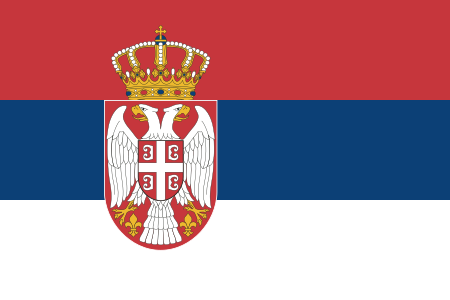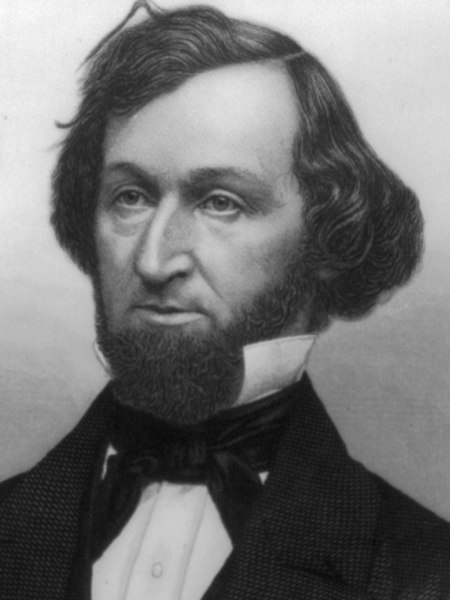Polish Soil Classification
|
Read other articles:

LibraDenominasiSimbol≋PengembanganBuku putihBuku putih LibraRilis perdana2020 (direncanakan)Repositorigithub.com/libra/libraStatus pengembanganDiumumkanBahasa pemrogramanRustPengembangLibra AssociationFacebook, Inc.Model sumberSumber terbukaLisensiLisensi Apache[1]Situs weblibra.org Libra adalah mata uang digital berbasis rantai blok berizin (permissioned blockchain) atau rantai blok privat (private blockchain) yang diusulkan oleh perusahaan media sosial asal Amerika Serikat, Facebook,…

For the economist, see Michael C. Lovell. Michael R. LovellLovell in 201224th President of Marquette UniversityIncumbentAssumed office 2014Preceded byRobert A. Wild (interim)8th Chancellor of the University of Wisconsin–MilwaukeeIn office2011–2014Preceded byCarlos E. SantiagoSucceeded byMark Mone Personal detailsBorn (1967-03-20) March 20, 1967 (age 57)SpouseAmy LovellChildren4Alma materUniversity of Pittsburgh (BS, MS, PhD) Michael R. Lovell (born March 20, 1967) is an American…

Water polo around the world Water polo is a full-contact sport played in many countries around the world. The sport's international governing body is FINA. Some countries have two principal competitions: a more prestigious league which is typically a double round-robin tournament restricted to the elite clubs, and a cup which is a single-elimination tournament open to both the elite and lesser clubs. World Governing body Number ofmembersassociations Main men's competition(s) Main women's competi…

此條目可参照英語維基百科相應條目来扩充。 (2021年5月6日)若您熟悉来源语言和主题,请协助参考外语维基百科扩充条目。请勿直接提交机械翻译,也不要翻译不可靠、低品质内容。依版权协议,译文需在编辑摘要注明来源,或于讨论页顶部标记{{Translated page}}标签。 约翰斯顿环礁Kalama Atoll 美國本土外小島嶼 Johnston Atoll 旗幟颂歌:《星條旗》The Star-Spangled Banner約翰斯頓環礁地�…

此條目可参照英語維基百科相應條目来扩充。 (2021年5月6日)若您熟悉来源语言和主题,请协助参考外语维基百科扩充条目。请勿直接提交机械翻译,也不要翻译不可靠、低品质内容。依版权协议,译文需在编辑摘要注明来源,或于讨论页顶部标记{{Translated page}}标签。 约翰斯顿环礁Kalama Atoll 美國本土外小島嶼 Johnston Atoll 旗幟颂歌:《星條旗》The Star-Spangled Banner約翰斯頓環礁地�…

Questa voce sull'argomento contee dell'Illinois è solo un abbozzo. Contribuisci a migliorarla secondo le convenzioni di Wikipedia. Contea di JacksonconteaLocalizzazioneStato Stati Uniti Stato federato Illinois AmministrazioneCapoluogoMurphysboro Data di istituzione1816 TerritorioCoordinatedel capoluogo37°47′24″N 89°22′48″W / 37.79°N 89.38°W37.79; -89.38 (Contea di Jackson)Coordinate: 37°47′24″N 89°22′48″W / 37.79°N 89.38°W…

Indian film production company This article has multiple issues. Please help improve it or discuss these issues on the talk page. (Learn how and when to remove these template messages) The topic of this article may not meet Wikipedia's notability guidelines for companies and organizations. Please help to demonstrate the notability of the topic by citing reliable secondary sources that are independent of the topic and provide significant coverage of it beyond a mere trivial mention. If notability…

Pour les articles homonymes, voir Olbia (homonymie). Cet article est une ébauche concernant une localité italienne et la Sardaigne. Vous pouvez partager vos connaissances en l’améliorant (comment ?) selon les recommandations des projets correspondants. Consultez la liste des tâches à accomplir en page de discussion. Olbia Armoiries Nom sarde Terranoa Administration Pays Italie Région Sardaigne Province Sassari Maire Settimo Nizzi (Forza Italia) Code postal 07026 Code IST…

Can ÖncüÖncü di Grand Prix Valencia 2018KebangsaanTurkiLahir26 Juli 2003 (umur 20)Alanya, TurkiTim saat iniTurkish RacingNo. motor61Situs webÖncü Twins Catatan statistik Karier Kejuaraan Dunia Moto3Tahun aktif2018–2019 PabrikanKTM Juara dunia0 Klasemen 201931st (8 poin) Start Menang Podium Pole F. lap Poin 17 1 1 0 1 33 Karier Kejuaraan Dunia SupersportTahun aktif2020 PabrikanKawasakiJuara dunia0Klasemen 202012th (65 poin) Start Menang Podium Pole F. lap Poin 15 0 0 0 0 65 Can Alexa…

American Abstract expressionist painter (1905–1988) Perle FineBorn1905 (1905)Boston, MassachusettsDied1988 (aged 82–83)East Hampton, New YorkNationalityAmericanKnown forPaintingMovementAbstract expressionism Perle Fine (born Poule Feine)[1](1905–1988) was an American Abstract expressionist painter.[2] Fine's work was most known by its combination of fluid and brushy rendering of the materials and the use of biomorphic forms encased and intertwined with ir…

Swedish painter and educator (1895–1982) Signe BarthBorn(1895-06-16)June 16, 1895UddevallaDied(1982-03-15)March 15, 1982 (aged 86)StockholmNationalitySwedishOccupationPainter Signe Magdalena Barth née Pettersson (16 June 1895, Uddevalla — 15 March 1982, Stockholm) was a Swedish painter and art teacher. After studying in Stockholm and Copenhagen, she moved to Paris in 1920 where she completed her education, married and settled until 1936. After returning to Sweden, she ran an art college in …

لمعانٍ أخرى، طالع مستشفى الملك فهد (توضيح). مستشفى الملك فهد التخصصي بالدمام مستشفى الملك فهد التخصصي إحداثيات 26°24′43″N 50°06′10″E / 26.41208°N 50.10288°E / 26.41208; 50.10288 معلومات عامة نوع المبنى تخصصي الموقع المنطقة الشرقية القرية أو المدينة الدمام الدولة المملكة ال…

1927 novel by Willa Cather Death Comes for the Archbishop First edition dust jacketAuthorWilla CatherCountryUnited StatesLanguageEnglishPublisherAlfred A. KnopfPublication date1927TextDeath Comes for the Archbishop online Death Comes for the Archbishop is a 1927 novel by American author Willa Cather. It concerns the attempts of a Catholic bishop and a priest to establish a diocese in New Mexico Territory. Plot summary The narrative is based on two historical figures of the late 19th century, Jea…

Failed terror attack Cargo planes bomb plotLocationUnited States of America (target); East Midlands Airport and Dubai International Airport (discovered)DateOctober 29, 2010 (discovered)Target2 planesAttack typeBombing (failed)WeaponsTwo packages, each containing a printer cartridge packed with a bomb made from the plastic explosive PETNDeaths0Injured0PerpetratorAl-Qaeda in the Arabian Peninsula On October 29, 2010, two packages, each containing a bomb consisting of 300 to 400 grams (11–14…

Numbering plan areas and area codes of New Jersey The area codes in the U.S. State of New Jersey are a component of the North American Numbering Plan. 201: Northeastern New Jersey, primarily Bergen County and Hudson County. 551: Overlays area code 201. 609: Trenton, Lawrenceville, Princeton, Medford, Atlantic City, Barnegat, Wildwood, Ocean City, Burlington, Cape May. 640: Overlays 609.[1] 732: Toms River, Edison, New Brunswick, Freehold, Red Bank, Woodbridge, Perth Amboy, Carteret 848: …

American college basketball season 2007–08 Oregon Ducks men's basketballNCAA tournament, Round of 64ConferencePacific-10 ConferenceRecord18–14 (9–9 Pac-10)Head coachErnie KentAssistant coaches Mark Hudson Kenny Payne Home arenaMcArthur CourtSeasons← 2006–072008–09 → 2007–08 Pacific-10 Conferencemen's basketball standings Conf Overall Team W L PCT W L PCT No. 2 UCLA† 16 – 2 .889 35 – 4 .897 No. 11 …

Sports museum in Liberty Corner, New JerseyUnited States Golf Association Museum and Arnold Palmer Center for Golf HistoryUSGA Museum in 2019Established1936LocationLiberty Corner, New JerseyTypeSports museumDirectorHilary CronheimWebsitewww.usgamuseum.com The United States Golf Association Museum and Arnold Palmer Center for Golf History is home to a collection of golf artifacts and memorabilia. It is located adjacent to the United States Golf Association’s headquarters in Liberty Corner, Bern…

64th Venice International Film FestivalFestival posterOpening filmAtonement by Joe WrightClosing filmBlood Brothers by Alexi TanLocationVenice, ItalyFounded1932AwardsGolden Lion: Lust, CautionHosted byAmbra AngioliniFestival date29 August – 8 September 2007WebsiteWebsiteVenice Film Festival chronology65th 63rd The 64th annual Venice International Film Festival, held in Venice, Italy, from 29 August to 8 September 2007. The opening film of the festival was Joe Wright's Atonement and the closing…

تانيا سافيتش معلومات شخصية الميلاد 20 مارس 1985 (39 سنة) الإقامة بلغراد مواطنة صربيا الزوج دوشان يوفانيتشيفيتش (ز.2011) الأولاد 2 الحياة العملية المهنة مغنية اللغات الصربية المواقع الموقع الموقع الرسمي IMDB صفحتها على IMDB[1] تعديل مصدري - تعديل تانيا �…

1860 Connecticut gubernatorial election ← 1859 April 2, 1860 1861 → Nominee William Alfred Buckingham Thomas H. Seymour Party Republican Democratic Popular vote 44,458 43,920 Percentage 50.30% 49.70% County results Municipality resultsMunicipal resultsBuckingham: 50–60% 60–70% 70–80%Seymour: 50–60% 60–70%…
